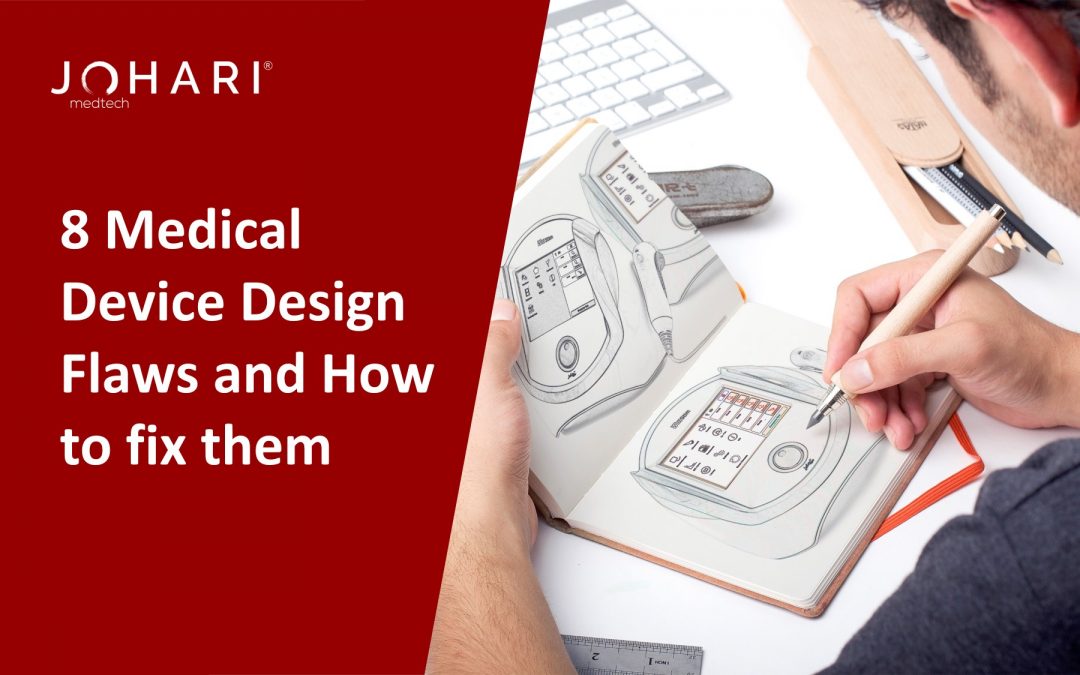Medical Device Design failure shows its impact both ways for the user and the manufacturer. The overhead cost due to recalls and extra investment in re-designing the product over and over can dig a hole in the developer’s pocket. Here we analyze possible areas in design that require special attention to ensure quality products and minimum Medical Device Design Flaws during the Medical Device Manufacturing & Development process.
1. Not Considering Innovation & Cost balance at the Design stage
Innovation doesn’t always need very costly or exclusive capabilities or components. Make sure the design is flexible and, most of the things are adaptable as per the requirements. The components you plan for the design, the machinery/capabilities you decide on, and the vendors you choose must have a viable alternative so that you always have a free way to go without compromising the quality of the Medical Device. For instance, a client comes to us with a specific requirement to optimize cost of the product without compromising the enclosure design (USP of the product). In such cases the product research & development team works on finding the best material for enclosure which can be used for the enclosure without changing the design.
2. Ignoring human factors in the medical device design
Nowadays, medical devices are being used in multiple avenues. It is important to make these devices safe, easy to handle, affordable, and accessible. Doing proper market research that unfolds relevant interests of the end-user helps in incorporating factors that will ensure the device’s success in the long run.
3. Missing on Material check & taking simulation process lightly
Medical Devices come in direct contact with human skin and hence require biocompatible material. Also, the material needs to fit the RF Transparency requirement in the case of Electronic Medical Devices. Closely assessing the material during the R&D and effective simulation at the initial stage ensures the high-level safety of medical devices.
4. Ignoring the component storage and shelf life
Medical Devices have highly sensitive parts and components. Their transport, storage, and delivery eventually decide the fate of Medical Device Manufacturing. The component management system should be appropriately held & managed to ensure they aren’t destroyed before they are utilized.
5. Not focusing on the aesthetics of the product
Gone are the times when looks didn’t matter in a Medical Device. With the majority of brands focusing on the aesthetics of the medical device, it is important to strike a balance between aesthetics and functionality. Especially, while designing a product like fitness bands, Health watches, and Biosensor based devices it is important to ensure that the design vibes with the targeted young users who are very particular about the aesthetics of everything they use in their day to day lives.
6. Making the design too complicated
Often, we feel the need to incorporate too many things to make a device more useful and relevant. But, ironically it is the opposite the simpler, the better. Incorporating unnecessary jargon technologies or just adding features that don’t add any value to the device makes it completely futile and enhances the chances of market failure.
7. Missing out on Electrical Hazard testing
With Electronic Medical Devices, leakage current is regulated by the standard of IEC60601-1. The medical devices in the electronics domain require measuring functions for ensuring optimum current flows through the device and no damage occurs even when the current exceeds certain limits. Missing on this front can lead to compromising the safety of end-users.
8. Missing out on simulation testing for Thermal Management
Heating is an essential part of Electronic Medical Devices. The temperature of the device surface should be lower than while it is in use. Simulation testing helps evaluate the heating tendency of the surface. Unlike prototypes, these are virtually designed to help evaluate the overall functionality and safety.
FAQ’s
What steps one should follow to ensure flawless Electronic Medical Device Design?
- Ensure Regulatory Compliant Manufacturing
- Ensure CAPA Implementation
- Ensure Cost optimization technique implementation at all levels of Medical Device Development
- Incorporating Human Factors & Usability in the Medical Devices
What ensures the success of a Medical Device?
Designing the Medical Device keeping usability and human factors in mind ensures your medical device’s success.
How can I reduce the chances of a Medical Device Recall?
Implementing regular audits and resolving non-conformities is the only way to ensure that your medical device re-calls chances are minimum.
How to reduce the cost of overall medical device manufacturing?
Medical Device Manufacturing cost depends on many different aspects. At every step doing a critical analysis can help in optimizing the overall cost. Some major steps to minimize the costs are:
1. Performing vendor management
2. Investing in automation to reduce manual labor costs
3. Optimizing the Medical Device Design
4. Managing component obsolescence
If you are a Design company looking to close the manufacturing gap for your clients, schedule a consultation with Johari Digital Healthcare Ltd. We can help close the manufacturing loop so that your clients get a better experience under one roof.
Or
If you are a MedTech innovator looking to scale up your Medical Device project or you just have a prototype ready, we can help you complete your product’s success story.
Schedule a consultation with Johari Digital Healthcare Ltd. for cost-optimized & regulatory-compliant Medical Device Manufacturing.

